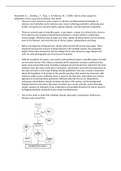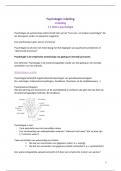Rosenfeldt, F. L., Dowling, J. T., Pepe, S., & Fullerton, M. J. (2000). How to write a paper for
publication. Heart, Lung and Circulation, 9(2), 82-87.
There are many reasons to write a paper: to advance and disseminate knowledge, to
advance your institution and to advance your career (achieving promotion, enhancing your
profile, increasing your research ability, gaining national- and international recognition).
There are several types of scientific paper: a case report, a report of a clinical trial, a how-to-
do-it report (a new surgical or biochemical technique), a review article or a laboratory
research paper. Whatever type of paper you write, explain all abbreviations at first mention,
even in the Abstract, and avoid the use of cliches, jargon, colloquialisms and slang.
Before you begin the writing process, decide which journal will receive your paper. This is
important because the amount of detail allowed in the methods section, the acceptable
length of the entire manuscript, the formatting of text and references, page charges and
costs for color photographs vary from journal to journal.
With the exception of reviews, case reports and hypothesis papers, scientific papers normally
use the same format: Title, Abstract (mention all the important concepts contained in the
paper using around 250 words, including a background and introductory statement, the main
methods used, the main results and a conclusion), Introduction (start with the importance of
the topic and refer to the major findings already published in the area, include a statement
about the hypothesis to be tested or the specific questions that need to be answered, with
reference made to any conflicting views or issues in the literature, and outline your chosen
approach to answering those questions), Methods (describe the use of: respondents,
techniques and statistics), Results (include only data in this section, not the background
findings that led to the data), Discussion (evaluate your results critically, avoid reiterating
results, and give an indication of any implications and possible directions for future research
by flagging questions arising from your study) and References.
The correct order is: draft Title, Methods, Results, Discussion, Introduction, References,
Abstract and revised Title.





